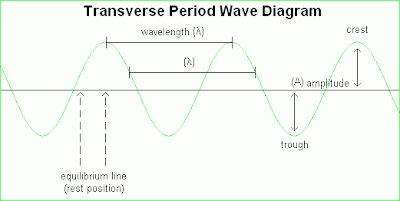Archimedes here, replacing Dion as our first scribe after agreeing that he allow me to be the first scribe of our class in exchange for appointing a classmate of his choice to be the next scribe. In case you are wondering who I am, I'm a Greek physicist, mathematician and astronomer. Well, I was at least... or I'm just Aldrin..
Today was a continuation of last Friday where we were ungracefully interrupted by a long, yet brief assembly. We were to obtain a blue "Grade 11 Physics Waves in One Dimension" booklet if we had not already acquired one on Friday. We read the first few pages of the booklet and later proceeded to going on our field or hall trip. We also received four sheets to complete, which are as follows:
Today was a continuation of last Friday where we were ungracefully interrupted by a long, yet brief assembly. We were to obtain a blue "Grade 11 Physics Waves in One Dimension" booklet if we had not already acquired one on Friday. We read the first few pages of the booklet and later proceeded to going on our field or hall trip. We also received four sheets to complete, which are as follows:
Grade 11 Physics: Waves in One Dimension
Physics 11 Period & Frequency Problems
Concept-Development Practice Page: Vibrations and Waves 25-1
Characteristics of Waves: Physics 30S
Here is a general overview of what we discussed and did in class.
Archimedes’ Language Bank (Terms and Definitions)
Archimedes’ Language Bank (Terms and Definitions)

Key Formulas
V= λ / T
V=f λ
F=1/T
V= λ / T
V=f λ
F=1/T
Continuous (Periodic) Wave: a wave produced by a disturbance (oscillating or vibrating source) that is moving back and forth continuously
-Producing a back and forth motion while holding onto a slinky creates a continuous wave
Transverse Wave: a continuous occurrence of pulses where the particles are simply displaced up and down while traveling in a direction that is perpendicular to the pulse itself
-Waves traveling on a guitar
Crest: the highest point on a wave
Trough: the lowest point on a wave
Amplitude (A): the distance between a crest or trough and equilibrium lin
Equilibrium Line (Level): the undisturbed position or axis of zero
Cycle: one complete sine wave or complete up and down motion, which is also known as one complete oscillation
Wavelength (λ): horizontal length of one cycle of a wave, or in other words, the horizontal distance between any two successive equivalent points on the wave. In a longitudinal wave, it is the horizontal distance between the center of a rarefaction and center of one next to it
Frequency (f): number of complete cycles or crests that pass a given point per unit of time, commonly measured in cycles per second or hertz (Hz)
Period (T): the time elapsed between two successive crests passing by the same point in space where the standard unit of period is the second
Wave Velocity (V): velocity at which the wave moves
Longitudinal Wave: the vibration of particles of the medium traveling the same direction as the motion of the wave
Compressions: areas in a longitudinal wave that are momentarily close together
Rarefactions (Expansions): regions where the coils are momentarily far apart
I apologize for my lack of effort I put into this scribe post. You may find a lot of grammatical, capitalization, punctuation, and spelling errors, but whatever. I needed to rush because I had other things to do. Anyways, good luck to the next scribe, who is Rebecca and slinky thingy tomorrow I believe?
3 comments:
lol never scribed since grade 8 -_-. i would have put another pictographic representation of the other part, but i had no time
Really thorough job on scribing. I liked how you inserted the diagram of the transverse wave & stated the labelled parts of the wave. Didn't really notice many grammatical errors.
wow aldrin, thast intense good job
Post a Comment